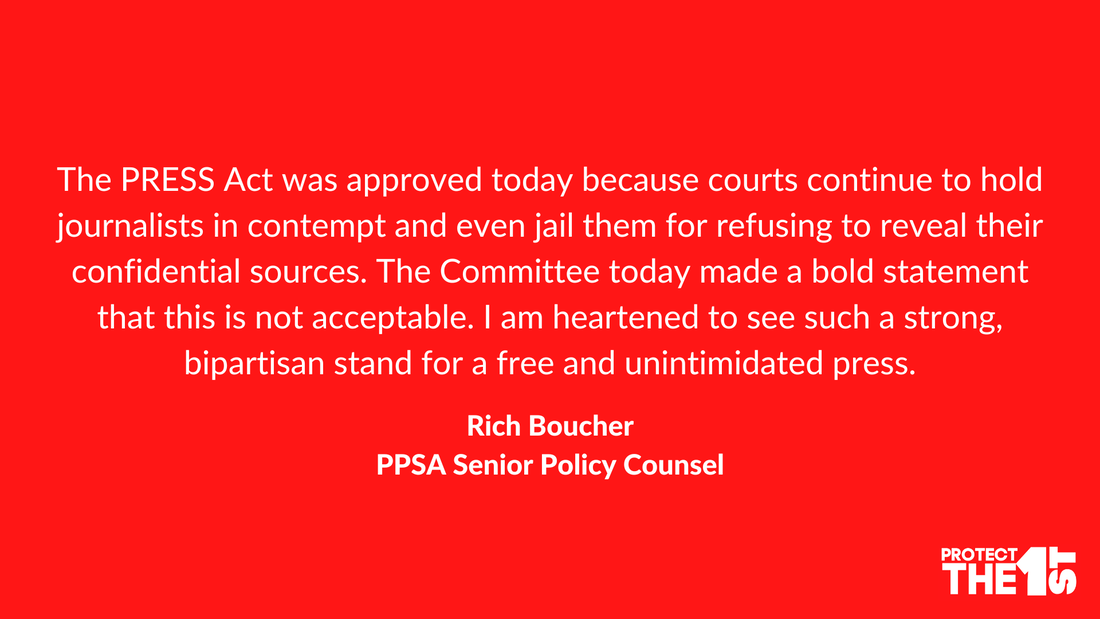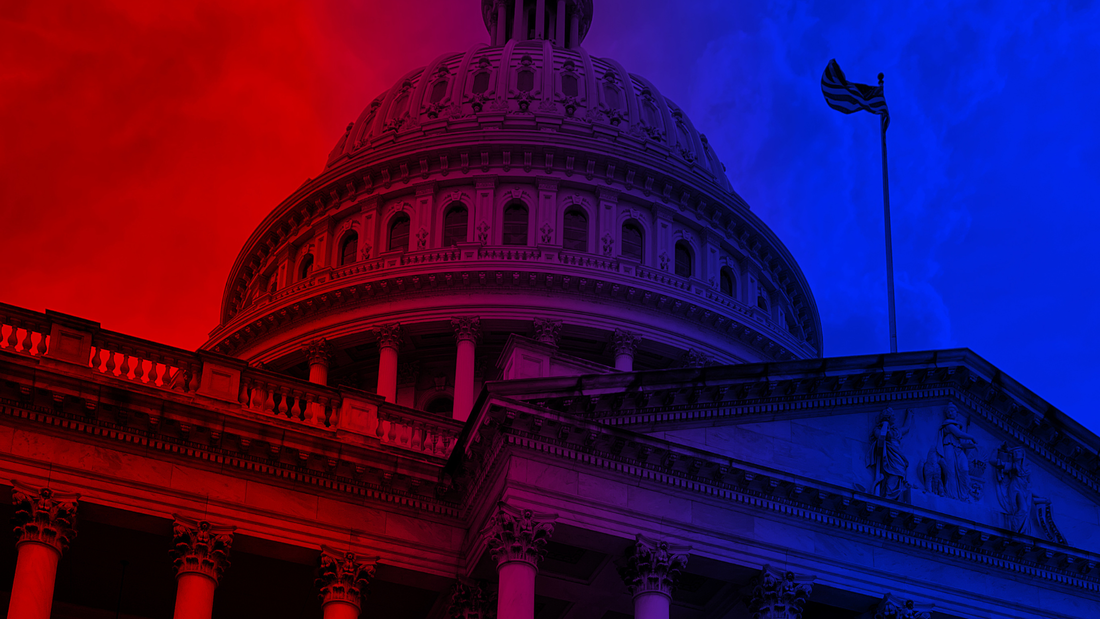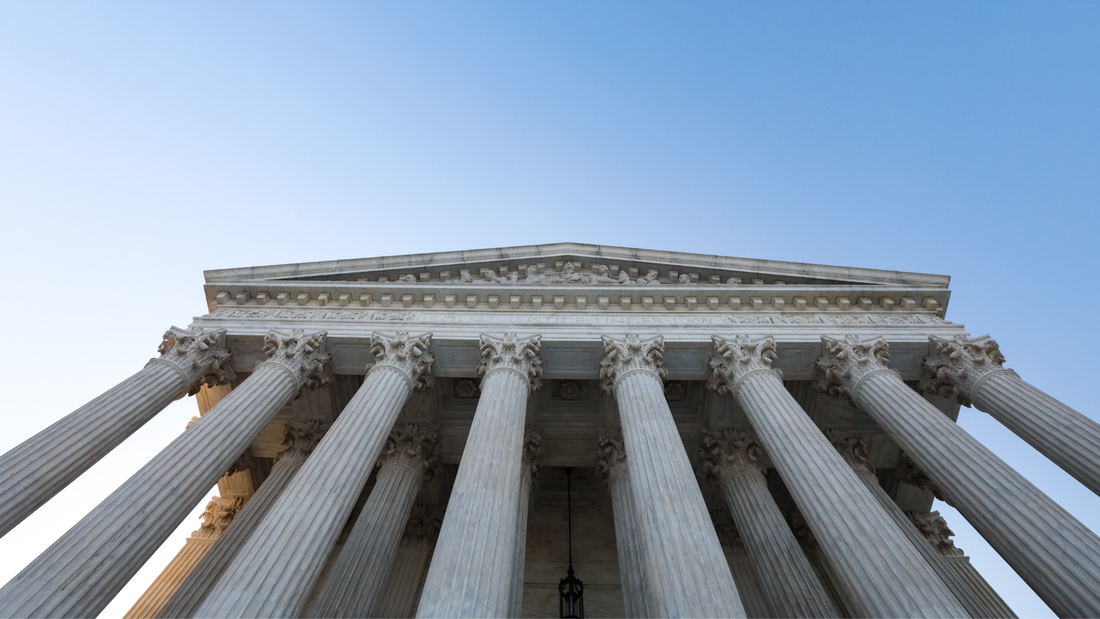|
On July 4th, Judge Terry A. Doughty, Trump appointed judge of the United States District Court for the Western District of Louisiana, issued an opinion and order enjoining listed federal agencies from “urging, encouraging, pressuring, or inducing in any manner the removal, deletion, suppression, or reduction of content containing protected free speech posted on social-media platforms.” The decision follows outcries from some conservatives that government agencies are pressuring social media companies to remove or modify content posted by conservative voices. The order was rapidly stayed by the Fifth Circuit Court of Appeals. One can be assured that the debate will continue.
We have questions. The case, Missouri v. Biden, stems from accusations of government censorship and viewpoint discrimination against conservative speech – specifically, posts related to whether vaccines are effective as a COVID-19 treatment, the origins of the COVID pandemic , the efficacy of lockdowns to slow the spread of the disease, and other content. Unsurprisingly, many on the right lauded the ruling as a victory against the administration’s “Orwellian ‘Ministry of Truth’” (quoting Doughty himself). Others decry it as politically driven theater, which could have significant, deleterious consequences on the government’s efforts to stem the flow of mis- or disinformation. Judge Doughty found that the posts in question did not fall within the narrow category of speech that is unprotected by the First Amendment (e.g., incitement to violence). He further cited specific examples of exchanges between the White House and various agencies and social media companies that could reasonably be interpreted as coercive. On the other hand, many reading the same comments could also interpret them as mere requests – intended to promote public health and safety. Herein lies the difficulty. What is clear from this case is that this issue is far from resolved. The Fifth Circuit on July 16th temporarily paused Doughty’s order and agreed to expedite the administration’s appeal. Ultimately that court will decide whether an injunction is appropriate (and, perhaps, another court after that). In the meantime, we are left with those pesky questions. Is government advice to social media companies helpful? The government possesses intelligence gathering capabilities far superior to those of any social media company. Do platforms welcome advice derived from those capabilities about the harmfulness of content? Or does the sharing of information constitute undue pressure? Is this a fact-specific inquiry? Where is the line between violating First Amendment rights and protecting public safety? Should the recipient’s perception matter at all? These questions merit an informed public debate. In our view, the best means of doing so would be to hold public, bipartisan congressional hearings (arguably not achieved by recent hearings held by the House Judiciary Select Subcommittee on the Weaponization of the Federal Government). The witness list for the hearings should prominently feature executives from the social media platforms who can address the questions directly. It’s true that courts make policy all the time, but such critical policy debates should not be resolved by injunction (or by reactive, piecemeal state legislation). A robust discussion at the national level is a far better means of comprehensively parsing the many nuances at play when it comes to social media and free speech. If it is determined that the government is threatening social media platforms, then that’s a problem that must be addressed – by the courts or by Congress, or both. But at the same time, the government must also be able to speak to private actors, including private companies, and especially on issues of public concern. (You might say it’s fundamental to the very concept of governance.) One thing lacking from Judge Doughty’s opinion is any articulable roadmap for distinguishing between legitimate government speech and coercion. We need one. As such, we might urge some of our more enlightened statesmen on both sides of the aisle: it’s time to speak up. The Foundation for Individual Rights and Expression is back in court again to remind the school system that they don’t have the power to curtail student speech outside of the classroom. The organization is representing a 17-year-old rising senior who was suspended by his Tennessee public high school for posting memes making fun of the principal’s dour personality.
In August of 2022, Tullahoma High School’s principal Jason Quick and assistant principal Derrick Crutchfield called the student, whose name is not mentioned, to their office and interrogated him about three memes he posted to Instagram off school grounds and outside school hours. As a consequence, Quick suspended the student based on a school policy prohibiting students from posting images on social media which “embarrass,” “discredit,” or “humiliate” another student or school staff. As FIRE attorney Conor Fitzpatrick said, “The First Amendment bars public school employees from acting as a 24/7 board of censors.” He added that “as long as a student’s posts do not substantially disrupt school, what teens post on social media on their own time is between them and their parents, not the government.” FIRE is representing the student in the hopes the courts will solidify their 2021 ruling in Mahanoy Area School District v. B.L. In that case, also filed by FIRE, the Supreme Court held that Pennsylvania’s Mahanoy Area High School violated former high school cheerleader Brandi Levy’s First Amendment rights by suspending her from the cheerleading team for voicing her frustrations with the school in a Snapchat post. In an 8-1 decision, the Court held that Levy’s comment, similarly posted while off-campus, was directed to her “private circle” of online friends. The Court affirmed that the incident did not constitute the “sort of ‘substantial disruption’ of a school activity or a threatened harm to the rights of others that might justify” disciplinary action. By filing this suit, FIRE cements its hard-fought precedent by standing up for students’ First Amendment rights. The phrase used to be that students don’t have to “shed their constitutional rights to freedom of speech or expression at the schoolhouse gate.” How far we’ve come that now we need lawsuits to remind schools that students don’t shed their First Amendment rights at home either. PT1 is very pleased to express our support for FIRE’s position in the litigation. House Judiciary Committee Passes Protect Reporters from Exploitative State Spying (PRESS) Act7/19/2023
PT1 is pleased that the House Judiciary Committee reported H.R. 4250, the Protect Reporters from Exploitative State Spying (PRESS) Act, to the full House by a unanimous 23-0 vote.
This bill, long supported by Protect The 1st and civil liberties sister organizations, would protect journalists and their sources by granting a privilege to shield confidential news sources in federal legal proceedings. It contains reasonable exceptions in cases where application of the privilege could result in serious harm. Former Rep. Rick Boucher (D-VA), PT1 Senior Policy Advisor, said: “The PRESS Act was approved today because courts continue to hold journalists in contempt and even jail them for refusing to reveal their confidential sources. The Committee today made a bold statement that this is not acceptable. I am heartened to see such a strong, bipartisan stand for a free and unintimidated press.” Former Rep. Bob Goodlatte who served as Chairman of the House Judiciary Committee, and now as PT1 Senior Policy Advisor, said: “Journalism and the right to report on government actions must be better protected. We’ve all seen law enforcement officials under multiple recent administrations issue secret orders to surveil the private communications of journalists. Their freedom to report on government misdeeds is critical to maintaining a free society, and I encourage the broader House of Representatives to swiftly approve this legislation, as they have in the past.” We would like to extend our gratitude to Reps. Kiley and Raskin for their leadership in introducing the bill, as well as to Chairman Jordan and Ranking Member Nadler for their support in moving it through committee. The PRESS Act’s passage is the result of overwhelming bipartisan support for freedom of the press guaranteed by the First Amendment of the Constitution. Protect the 1st hopes the full House will take up and pass this important legislation soon. In the First Council of Nicaea in the 4th century AD, Christians assembled to debate and set Christian doctrine under the watchful eyes of the Roman emperor Constantine. In the 21st century, some try to settle theological disputes through costly and frivolous lawsuits under the eyes of a secular judge. The role of secular law in theology arises from Janay Garrick’s complaint against her employer, the Moody Bible Institute, for gender discrimination.
The MBI affirms the traditional Catholic doctrine of male-only ordination to the priesthood, a belief as old as the church itself, but one which has become increasingly controversial over the last half century. In fact, the question of women’s ordination is a crucial doctrinal split among Christians today. Garrick calls herself an “egalitarian Christian” because she affirms the ordination of women. Garrick is herself an ordained minister and worked as Instructor of Communications in MBI’s Communications Program from 2014 to 2017. Garrick disclosed her beliefs as an egalitarian Christian during the interview process, but it wasn’t until she attempted to file her status as an ordained minister to receive certain institutional benefits that conflict with her employer began. MBI subscribes to the theological principle of Complementarianism, the belief that God intended different roles for men and women within the church. As such, MBI provides its ordination-related benefits to men only. In her suit, Garrick argues that MBI “both tolerated and cultivated an environment that was hostile to female faculty and students.” But while such complaints may have merit in any other context, in a constitutionally-protected religious organization whose views on women’s ordination were clear and unambiguous prior to her hiring, Garrick’s challenge should fail. It is necessary to the proper functioning of any religious order or organization to be able to enforce core doctrinal beliefs. Otherwise, institutions would collapse under the weight of dissent. The Constitution protects this right. But the great feature of the First Amendment is that it protects the religious liberty of church and parishioners alike. Garrick has the right to practice her faith as she sees fit, and this means that she is free to worship or pursue employment at one of the hundreds of denominations in the United States more theologically aligned with her beliefs. Just as it would be an infringement on the rights of the Moody Bible Institute to force everyone else within it to accommodate one dissenter, so would it be a violation of Garrick’s rights to force her to profess theological beliefs contrary to her own. We look forward to further developments in this case. While school choice has been advancing steadily across the country, sometimes progress can be two steps forward, one step back. This week, the Wall Street Journal editorial board penned an article calling attention to the stunning success of political efforts to enshrine school choice in the state of Ohio. Where Pennsylvania recently backed down on a school voucher proposal, Ohio has just opened a state voucher program to all families.
Under Ohio’s pre-existing EdChoice Scholarship Program, families earning under 250% of the federal poverty level were eligible to receive K-12 school vouchers. The program was also offered to families with students attending the state’s worst-performing schools; however, the recent legislation has expanded the eligibility for vouchers to all families, irrespective of income or school attendance. K-8 students will be eligible to receive scholarships totaling $6,165 which rises to $8,407 for high school students. According to the Ohio Legislative Service Commission, this change will make over 90,000 students currently attending private schools without a scholarship eligible for the program. The picture is just as rosy for the state’s charter schools. Charters will receive about a 12% increase in state funding and $1,000 per student in facilities funding. High-performing charters, which receive extra financial benefits, could receive around a 40% boost in funding, bringing them nearly on par with the resources provided to the state’s public schools. We are pleased by Ohio's bold step forward in providing resources to the state's private schools. With the expansion of the voucher program and increased funding for charter schools, Ohio is solidifying its commitment to school choice and creating more opportunities for families to access quality education options. It serves as a striking contrast to Pennsylvania's recent setback in pursuing school voucher initiatives, where Ohio has chosen to support educational freedom and empower parents in their children's education. The Office of Information and Regulatory Affairs (OIRA) is a division within the Office of Management and Budget that has the power to review regulations proposed by federal agencies. Since the days of Presidents Carter and Reagan, the White House has used OIRA as a way to maintain cost-benefit analyses of regulations, and to make sure that they do not conflict with public policy.
One clear public policy goal for any administration is to make sure that the national shortage of doctors and nurses on the front line of care is not exacerbated by thoughtless federal regulations. Now the Biden administration has proposed rescinding a Health and Human Services regulation to OIRA adopted during the Trump administration that protects the conscience rights of medical professionals – a move that could, in fact, reduce medical care, especially among underserved populations. Conscience rights protect doctors and nurses who object to performing certain procedures, such as abortion. Surveys demonstrate that 90 percent of religious health professionals would stop practicing medicine if ordered to violate their conscience. So far, we are looking at the administration’s OIRA maneuver through a glass darkly. There may be nothing to it other than paper shuffling, and there may be justification for amending the regulation. On the other hand, if the administration is preparing to force healers to perform procedures they object to, the result will be the departure of thousands of doctors and nurses from the front lines of care, especially those who work for less pay among the underserved. If so, such a move doesn’t sound like smart politics, either. We would bet that even a majority of Americans who are pro-choice would find the idea of compelling physicians to choose between performing abortions, or leaving the practice of medicine, morally objectionable. Let us hope that this is not where the administration wants to go. Mesha Mainor is a lawmaker in the Georgia House who represents a heavily Democratic Atlanta district in which some schools have 3 percent proficiency rates, and many children are utterly innumerate. Disgusted by the inferior performance of public schools, Rep. Mainor gave her support to the growing movement for school choice.
“When I decided to stand up on behalf of disadvantaged children in support of school choice, my Democrat colleagues didn’t stand by me,” Rep. Mainor said. “They crucified me.” In her words, she was “voting yes for parents and yes for children, not failing schools.” After her rough treatment, Mainor switched parties and registered as a Republican. “There is no good reason for officeholders to treat school choice as a partisan issue,” said Rick Boucher, former Democratic congressman from Virginia and Protect The 1st Senior Policy Advisor. “A RealClear Opinion Research poll found that support for school choice among Democrats rose from 59 percent to 68 percent between 2020 and 2022. In fact, support for school choice among Democrats exceeds that of independents by one point. “Millions of parents see school choice as a lifeline out of poverty,” Boucher said. “The commitment of Democrats to equality, opportunity, and pluralism should make school choice our issue.” The resignation of Rep. Mainor from the Democratic party is just the latest sign that school choice has hardened into a partisan dividing line. Democratic supporters of school choice were initially elated when governors of two major blue states – Gov. J.B. Pritzker of Illinois, and Gov. Josh Shapiro of Pennsylvania – endorsed modest school choice programs in their states. But this Democratic school choice moment did not last. After the ultra-powerful teacher’s union went to work on the governors, both soon backtracked on the bold stands they had taken while running for office. Gov. Pritzker acquiesced to the elimination of a state tax credit for private donations that sent 9,600 low-income students to quality private schools. Now the governor is talking about ways to “wind down” the program as these children return to subpar public schools. Gov. Shapiro boldly declared he stood by school choice because “every child of God” deserves a “quality education.” Yet Gov. Shapiro similarly backed down from his support for a $100 million scholarship plan for children trapped in the state’s lowest-performing public schools. Now these children of God will be returned to schools with abysmal track records. “It is easy to understand what Govs. Pritzker and Shapiro were seeing on the stump,” Boucher said. “School choice is immensely popular with Democrats, especially among disadvantaged and minority communities. Given our party’s legacy of support for families and children, we should show that in our party, children from struggling families come first.” The Supreme Court made the right call on Tuesday when it reversed (7-2) the conviction of a man convicted in Colorado under that state’s anti-stalking laws, establishing in the process a new standard for the criminal prosecution of “true threats.”
While the First Amendment broadly protects speech – including and especially controversial speech – exceptions exist for obscenity, incitement to violence, and other discrete categories. “True threats” constitutes one of those categories. Yet until Tuesday, some judicial disagreement persisted on the question of how to properly evaluate a purported “true threat” – particularly in the online arena. To quote Justice Kagan, “Courts are divided about (1) whether the First Amendment requires proof of a defendant’s subjective mindset in true-threats cases, and (2) if so, what mens rea standard is sufficient.” In this case, petitioner Billy Counterman was convicted of stalking by a Colorado court after he sent repeated online messages to a female musician that caused her to fear for her safety. The court convicted Counterman using an objective test employing a “reasonable person” standard. In other words, the court asked whether a “reasonable person” would interpret Counterman’s messages as threatening. The Colorado court found that they would. On appeal, attorneys for Counterman argued that any determination of whether speech constitutes a “true threat” should take into account the defendant’s intent – i.e. his state of mind (mens rea). The Supreme Court agreed. In a majority opinion authored by Justice Elena Kagan, the Court found that “the State must prove in true-threats cases that the defendant had some subjective understanding of his statements’ threatening nature.” However, according to the Court, the government need not show that the defendant’s purpose was to threaten; instead, they must merely prove that “the defendant consciously disregarded a substantial risk that his communications would be viewed as threatening violence.” This “recklessness” standard, Kagan writes, “offers ‘enough ‘breathing space’ for protected speech,’ without sacrificing too many of the benefits of enforcing laws against true threats.” And it’s a true compromise, too – one where both sides walk away a little unhappy. “The rule we adopt today is neither the most speech-protective nor the most sensitive to the dangers of true threats,” Kagan writes. “But in declining one of those two alternative paths, something more important is gained….” While the majority recognized that some prosecutors may face a higher burden of proof in future true-threats cases, they correctly weighed that burden against the potentially chilling effects of a purely objective test. Kagan writes: “The speaker’s fear of mistaking whether a statement is a threat; his fear of the legal system getting that judgment wrong; his fear, in any event, of incurring legal costs – all those may lead him to swallow words that are in fact not true threats.” Legally, incorporation of the “mens rea” element in true-threats cases has been a long time coming. The Court has gradually built that element over the years in cases like Virginia v. Black and Elonis v. United States. In other words, it’s legally consistent with prior opinions – but it’s also good policy. The American Civil Liberties Union, long an ardent defender of even the most offensive free speech, notes: “[O]ne person’s opprobrium may be another’s threat. A statute that proscribes speech even where the speaker does not intend to threaten, as does the Colorado statute at issue here, runs the risk of punishing protected First Amendment expression simply because it is crudely or zealously expressed.” This is especially true in the context of online speech, which is “often abbreviated, idiosyncratic, decontextualized, and ambiguous.” Statements made on social media platforms can be accessible to impossibly large, diverse, and unpredictable audiences; how they may interpret such speech is anyone’s guess. Thus, the objective test becomes something like a negligence standard – it criminalizes mistakes. Writes the ACLU: “If First Amendment protections are to enjoy enduring relevance in the twenty-first century, they must apply with full force to speech conducted online.” An amicus brief co-authored by the Electronic Frontier Foundation and the Student Press Law Center builds on this point, suggesting that the objective standard could “incorrectly capture a staggering amount of humor, hyperbole, sarcasm, art, and even malicious speech that was never supposed to reach a particular person, and/or never intended to be read as threatening.” Counterman may well be convicted on remand based on the new, subjective standard for true threats. As for the rest of us, we now have a lot more certainty on the extent to which the First Amendment protects even our coarsest civil discourse – particularly in the online arena. We applaud the Supreme Court’s ruling, one that protects all manner of speech that may be critical or harsh or hyperbolic – but non-threatening all the same. |
Archives
June 2024
Categories
All
|
ABOUT |
ISSUES |
TAKE ACTION |










 RSS Feed
RSS Feed